



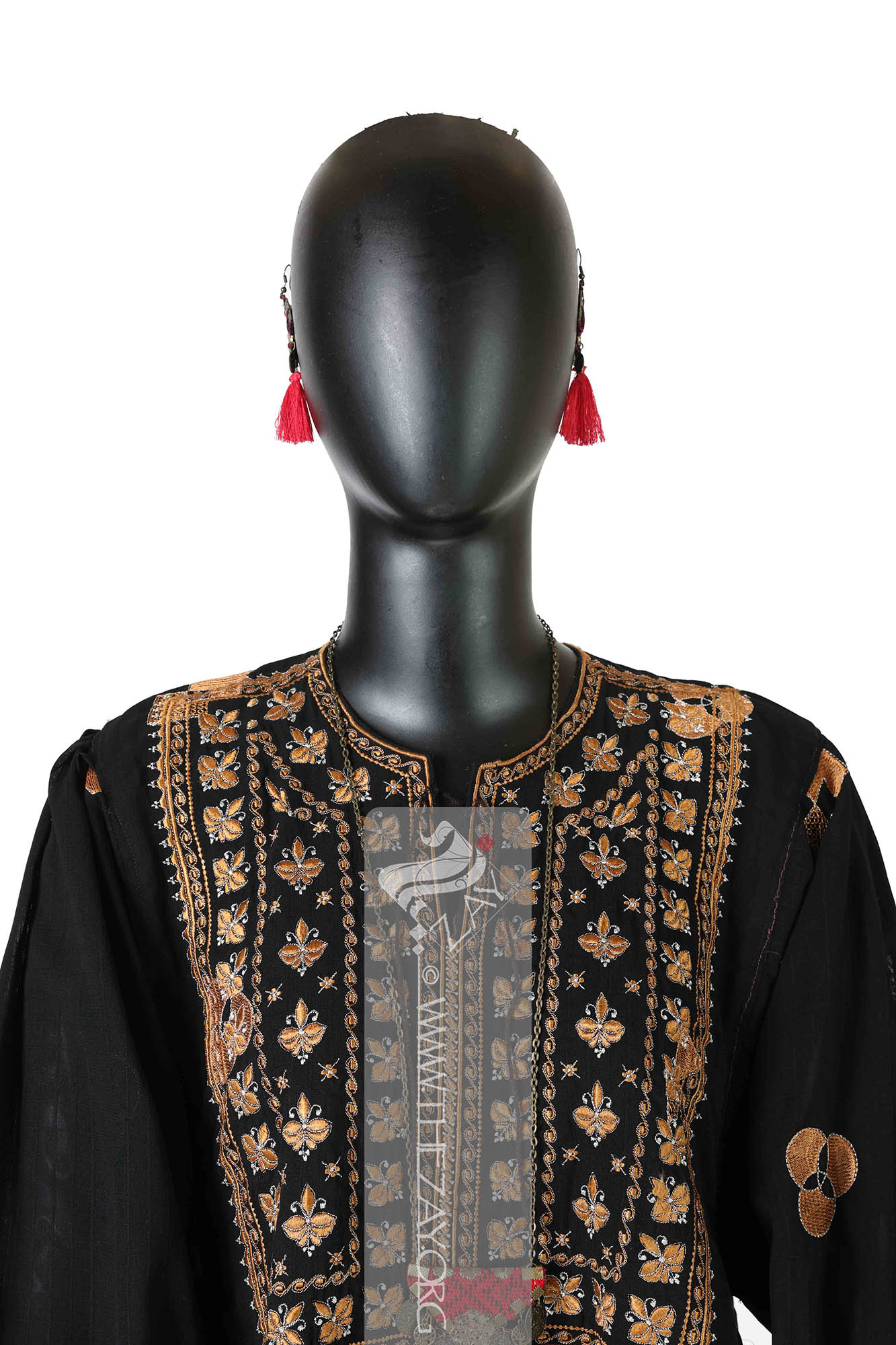
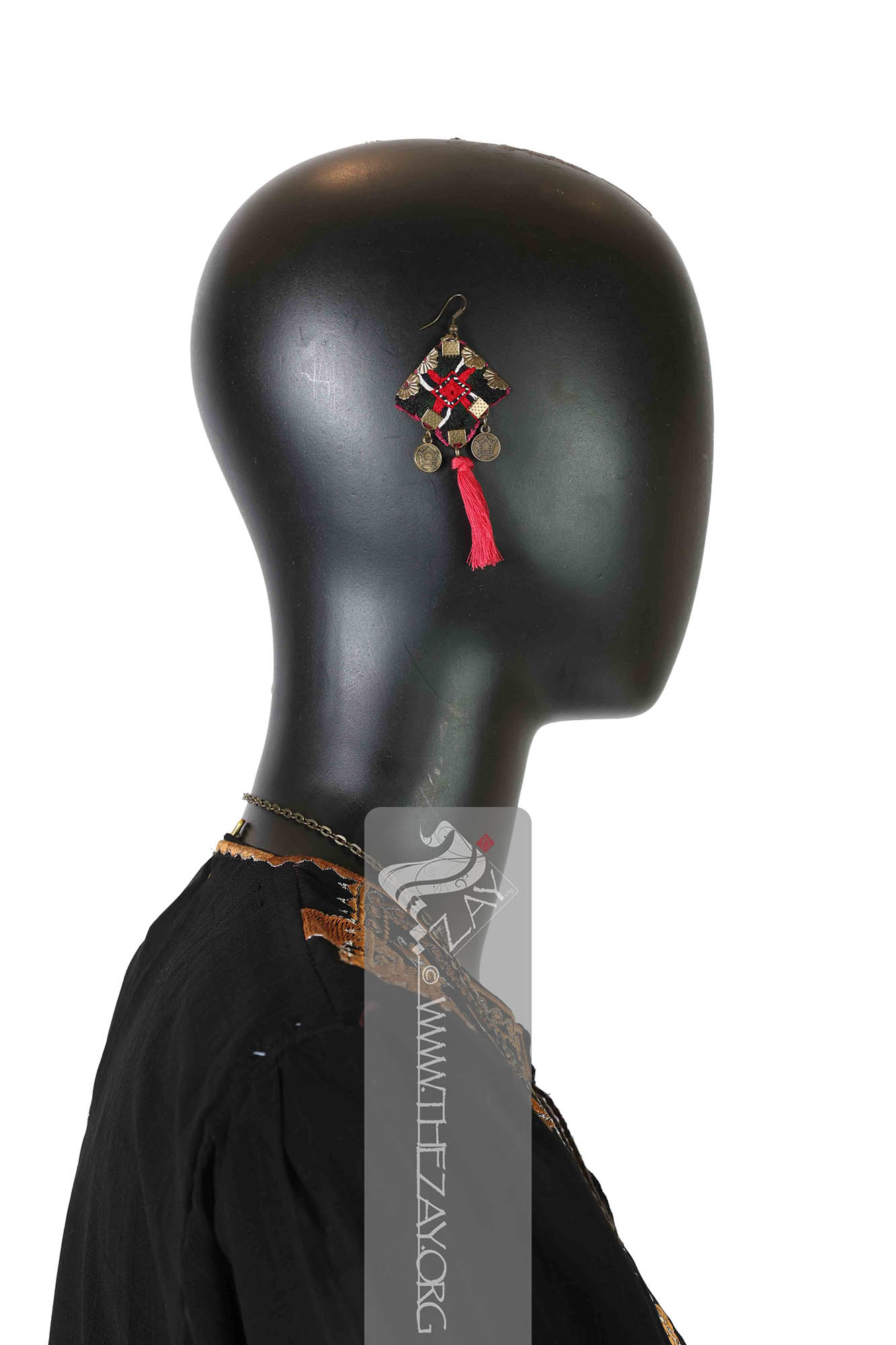
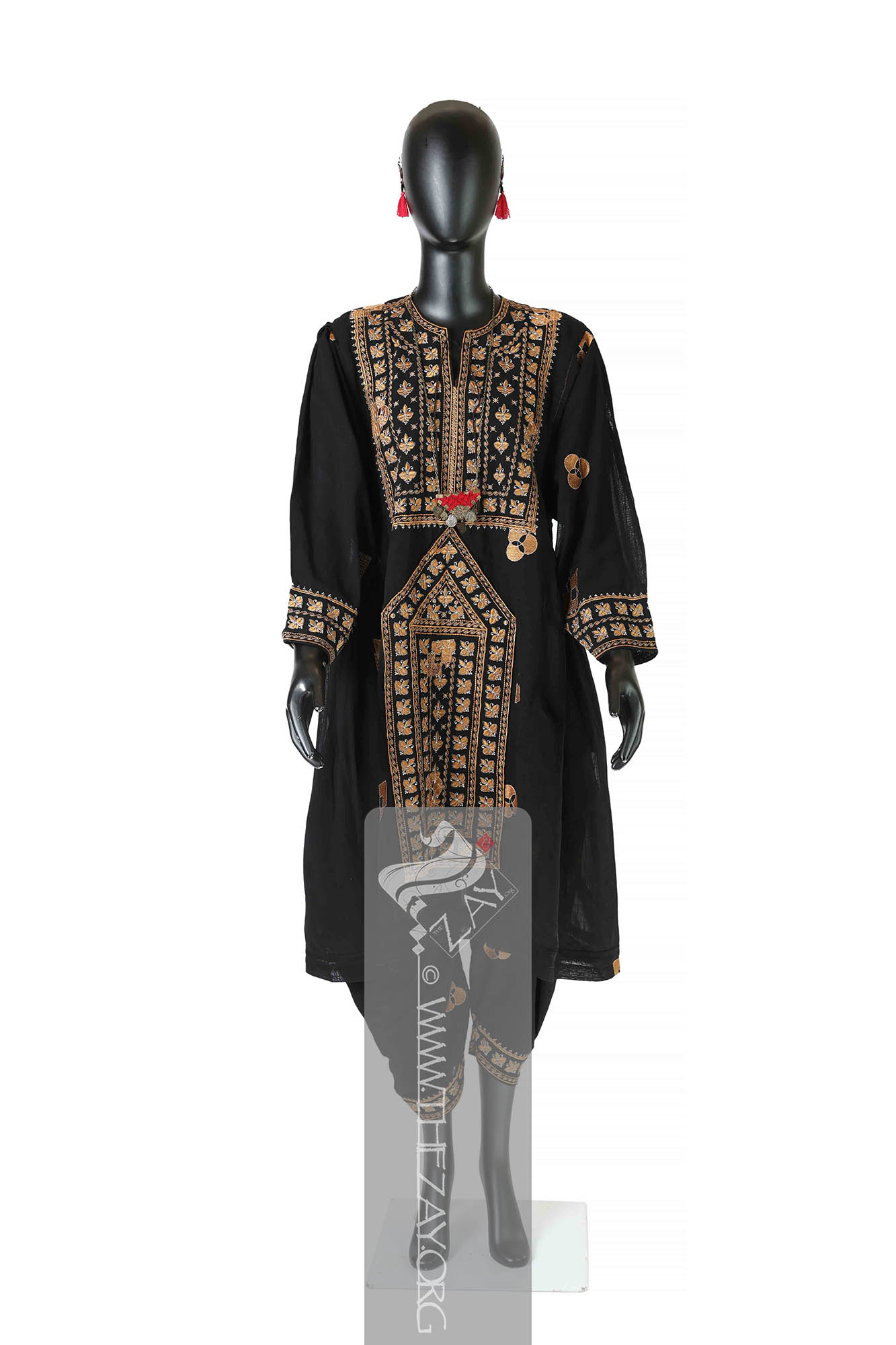
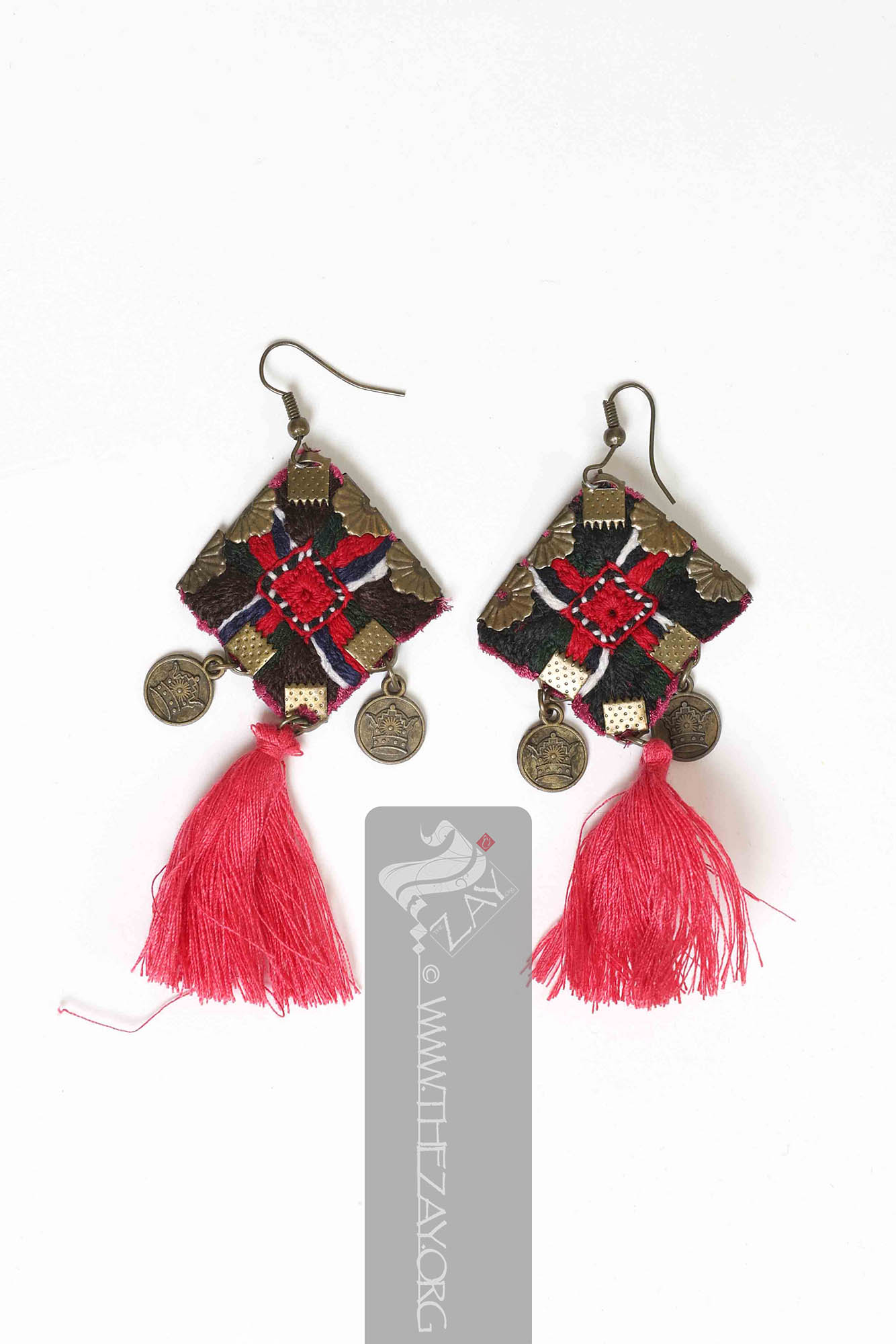
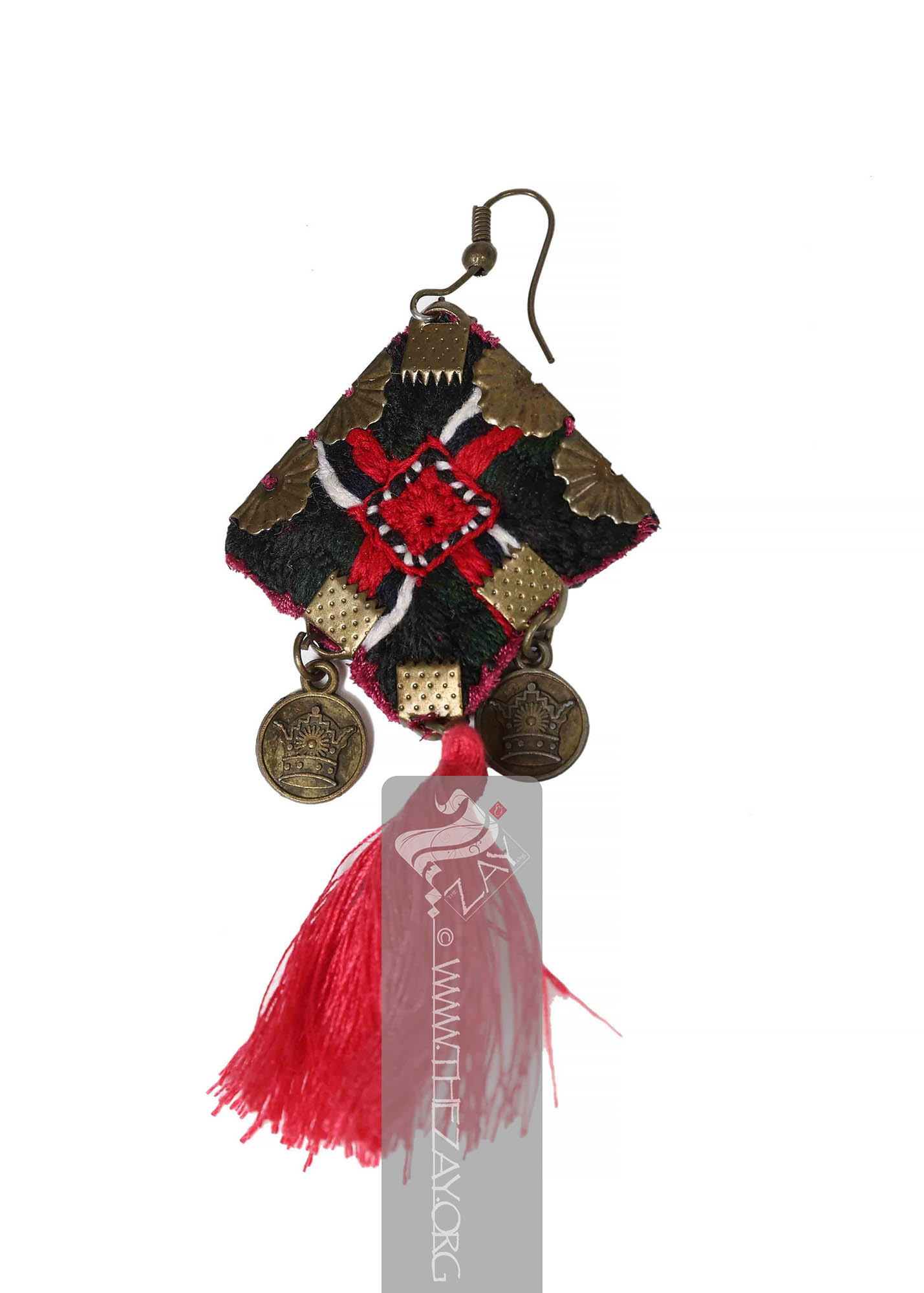
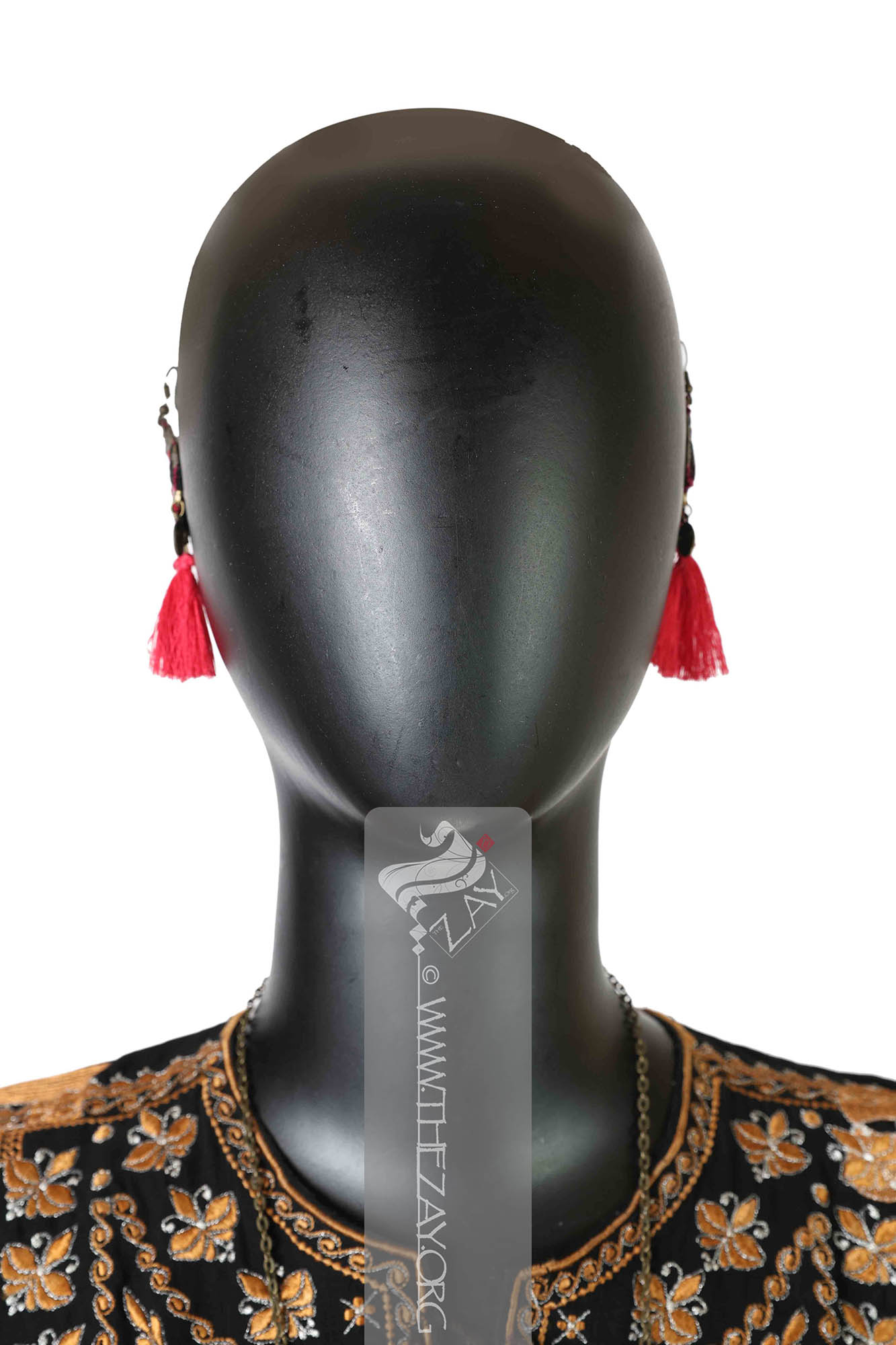
| Local Name | - |
| Object Category | Accessory |
| Gender | Female |
| Place Of orgin | Asia |
| Region | Sistan and Baluchestan |
| Object Range | Iran, Pakistan, Afghanistan, India |
| Dimensions | Length: 9 cm Width: 4 cm |
| Materials | Silk Wool Metal |
| Technique | Hand Stitched Hand Embroidered |
| Color | |
| Motif | Floral Geometric |
| Provenance | Purchased, dealer, Iran 2020 |
| Location | The Zay Zay: (Arabic: costume, Pl. azyaā’), a set of clothes in a style typical of a particular country or historical period. Initiative |
| Status | In Storage |
| ZI number | ZI2020.500734c ASIA |
Object Note
Part of an ensemble consisting of three more items in the collection (ZI2020.500734 ASIA, ZI2020.500734a ASIA, and ZI2020.500734b ASIA).
Object History
This red, black, and ivory pair of women’s woollen earrings with metalwork native to the Balochi/Baluchi tribes native to Iran, Pakistan, Afghanistan, and India was purchased by Dr. Reem Tariq
Ṭariq: (Arabic; Synonym: tulle_bi_talli
Tūlle_bi_tallī: (French: Tulle – a city in France where fine material for veil was first made; Turkish: tel – wire; Synonym: tariq; talli; badla; khus_dozi ), series of small metal knots made on a woven net ground as embellishment. The term is commonly used in the North African Arab region specifically in Egypt. Ṭariq: (Arabic; Synonym: tulle_bi_talli
Tūlle_bi_tallī: (French: Tulle – a city in France where fine material for veil was first made; Turkish: tel – wire; Synonym: tariq; talli; badla; khus_dozi ), series of small metal knots made on a woven net ground as embellishment. The term is commonly used in the North African Arab region specifically in Egypt.
Object Features
This is a pair of women’s ear ornaments or earrings with metal – possibly brass – trimmings. Each piece of the pair is made of a diamond-shaped black felt embellished with black, red, white, and touches of blue wool with possibly (buttonhole_stitch
Buttonhole_stitch: It is a decorative embroidery or looped stitch that is worked around the edge of an opening like the edges of buttonholes, creating a strong durable and neat finish.
The metal plates adorning the earrings have embossed or carved floral and geometric designs. A large pink tassel made of silk floss Floss: (Old French: flosche – nap of velvet), is a type of silk fibre obtained from the cocoons of wild silkworms. It is characterized by its long, fluffy fibers that are not tightly woven, making it ideal for use in various textile applications such as embroidery, lace-making, and sewing. threads hangs from the middle and flanked by two small medallions made of metal with a crown motif embossed on them. This crown motif is possibly the Qajar crown that adorned the top of Qajar currency and seals and was often accompanied by a lion and a sun – shir o Khurshid – motif.
The presence of these medallions thus testifies that this piece and the rest of the ensemble that accompanied it possibly originated in present-day Sistan and Baluchestan province of Iran.
Links